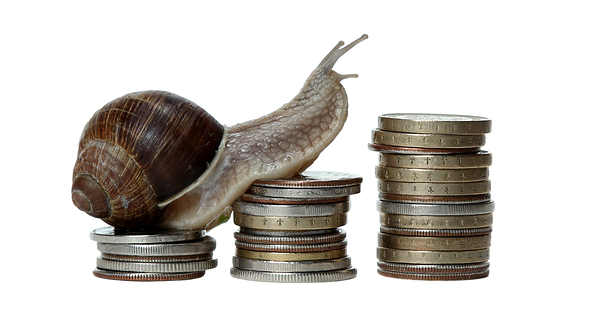After “tearing it up” for much of 2018, the U.S. economy finally slowed in the year’s final three months, caused by a growing trade deficit and slumping housing market. Together, they looked to spell doom for GDP growth – a number that came in at 2.6% for Q4.
It was slightly disappointing to see growth drop to that level, since the U.S. enjoyed 3.4% economic growth in Q3 and a rollicking 4.2% growth rate for the second quarter. Still, economists polled by Unseen Opportunity last year had only predicted a 1.9% rise for Q4, so in the end, the economy beat expectations for the quarter, and certainly for the year.
Q4’s drop did, however, prevent the U.S. from reaching 3% annual growth, which the economy hasn’t seen since 2005. By the end of 2018, GDP sat at 2.9% for the year, matching 2015’s growth gains and marking one of the biggest increases since the 2008 financial crisis.
Some experts blame the lengthy government shutdown for the 3.0% miss, as gridlock gripped Washington shortly before Christmas, intensifying fears of an economic contraction in 2019. The Bureau of Economic Analysis, for example, maintains that the shutdown was responsible for a 0.1% drop in GDP growth for the year – enough to close the gap to 3.0%.
But even though GDP dropped in Q4 last year, consumer spending – what ultimately drives the economy – actually increased during the same period, up 2.8%. Households may not have spent as much as they did in the two quarters prior (which saw 4.2% and 3.4% GDP growth), but they were more than doing their part to keep the economy afloat.
More surprisingly, though, was that business investment came in way higher than expected. This was especially shocking, as Q4 was the quarter that endured a market plunge and series of interest-rate hikes from the Fed.
Contrary to predictions made earlier, in Q4, companies purchased equipment and intellectual property en masse, hoping to gain a sharper competitive edge during the “dog days” of 2019 – a year where economic growth was expected to shrink.
And it gets even better.
According to reports spanning several industries, American firms increased their inventory value by $97.1 billion, beating out inventory gains for the third quarter when the going was good. Again, analysts expected inventories to actually shrink over that same period – something that didn’t happen as companies prepared for a leaner economy.
And of course, the much-beleaguered housing market took another hit in Q4, as investments in new home construction dropped 3.5% according to industry analysts. Thankfully, there was still a silver lining to be found there as well, as the National Association of Home Builders (NAHB) measured a massive gain in their confidence index during January – meaning that the worst may be in the rearview mirror for homebuilders.
So, in the end, even though GDP growth dropped in Q4 2018, consumers continued to spend money at a healthy clip and corporations made some smart purchasing decisions for the future – betting on themselves through the acquisition of business capital, something almost nobody expected in Q4.
And though Q1 2019 could mark another GDP growth decrease, the U.S. is still on track to set an economic expansion record, beating out the 120-month period of rapid growth from 1991-2001.
Right now, we’re sitting on 116 months of growth, and if companies and consumers continue to beat spending projections, there’s no reason why we can’t stretch this thing out another 4 months (or longer).








